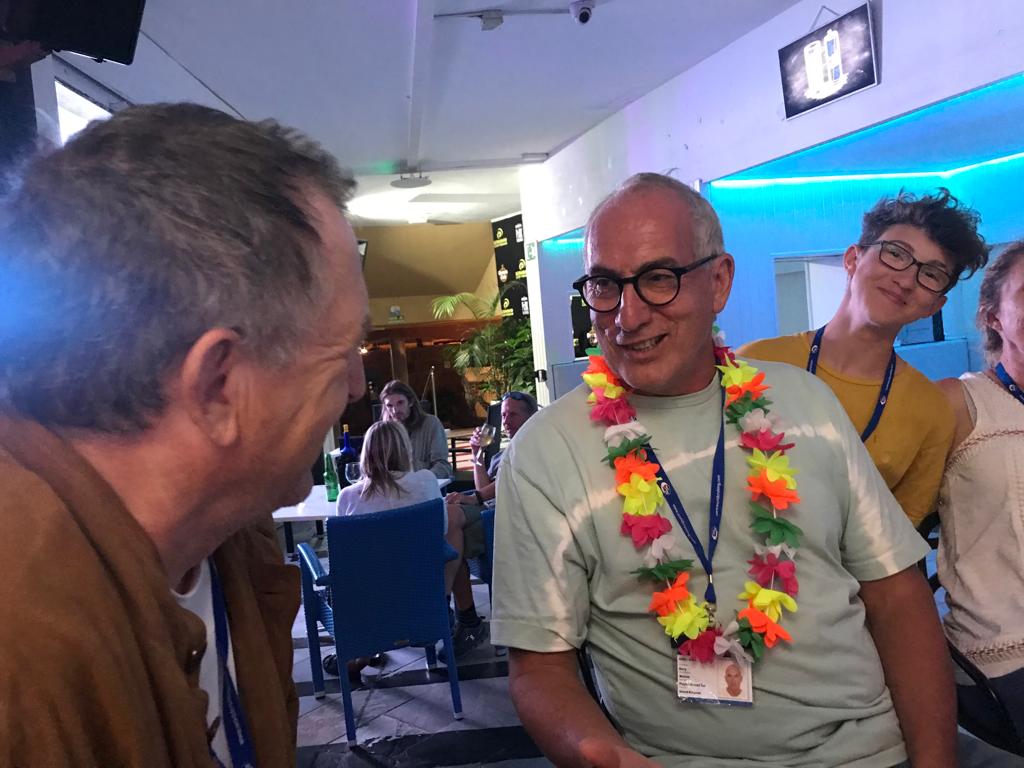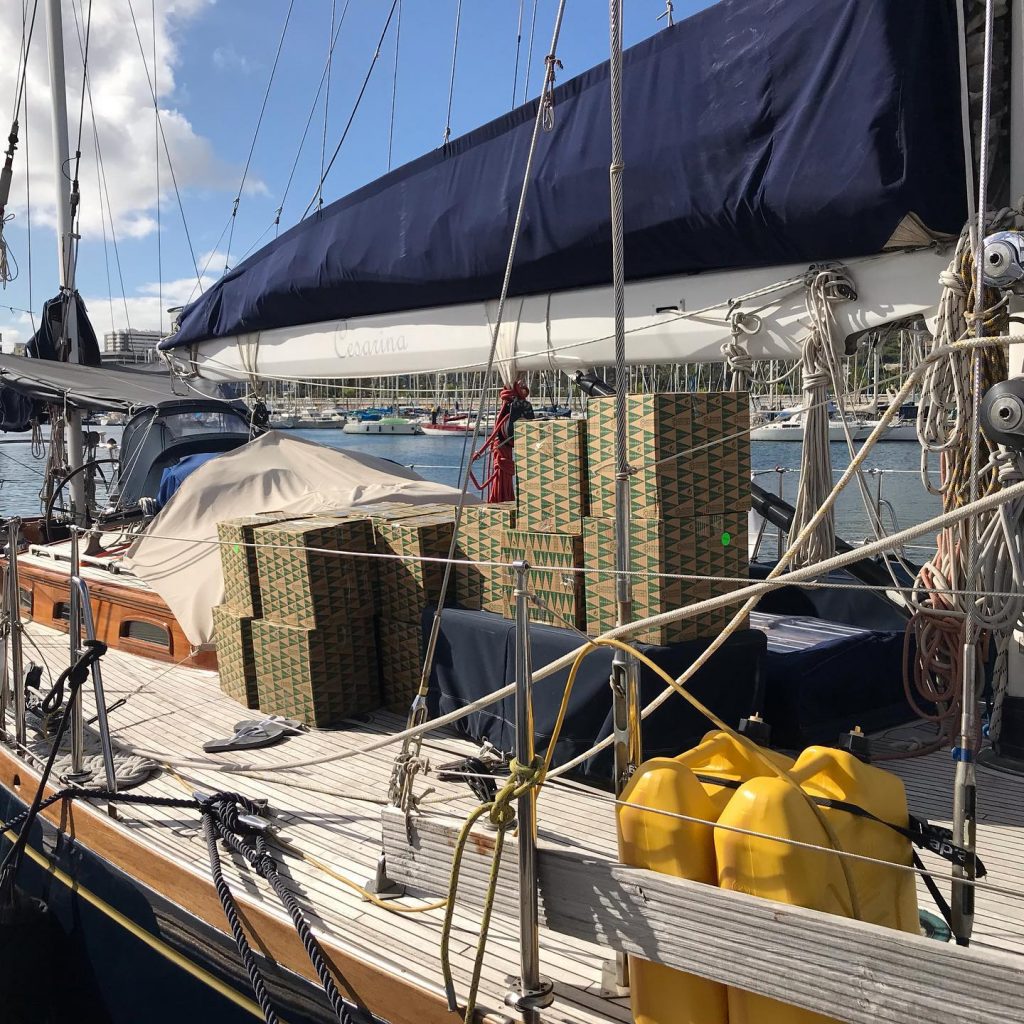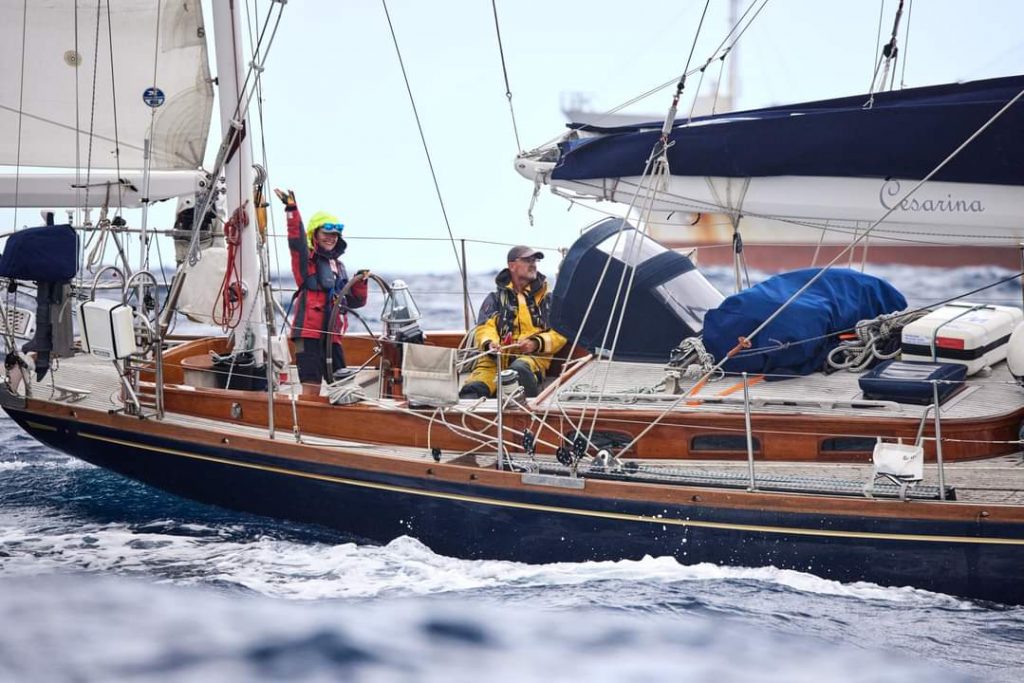How to Accidentally Set Sail for the Caribbean
We sailed to Las Palmas, on the Canary Island of Gran Canaria, at the end of October 2021, straight into the mêlée of the ARC+ circus.
We were booked in, paid up, on the list – and it was to be the third Atlantic crossing from east to west for both of us (although Dietmar counts his extraordinary sail from Capetown, at the tip of Africa, up to Germany (via St Helena, the Cape Verdes (more about that later) and the Azores) as a fourth Atlantic crossing – south to north. Hardcore. I’m just a softie trade wind sailor by comparison).
We had procrastinated at length about whether we even wanted to cross the Atlantic this year. So many factors to consider and things to worry about. We knew that we wanted to be somewhere warm and several times agreed that we could just stay in the Canaries for the winter (although, honestly, I was not remotely excited about this). We were worried about Covid – both the risk to us and the possible impact on our travels, and neither of us were all that stoked about that long slog across the pond again. We knew one thing though for certain: if we sailed to Las Palmas, we would not be able to resist the momentum.
And so it was – before we knew it, we were tying our ARC rally number onto the lifelines, ready for the start.
The ARC+ leaves from Las Palmas, like the ‘normal’ ARC (Atlantic Rally for Cruisers) but, instead of heading for the Caribbean direct, the ARC+ breaks the crossing to the Caribbean into two legs- the first 850 mile leg is to Mindelo on São Vicente in the Cape Verde archipelago off the coast of Senegal. After a few days of R&R there, the fleet sets off again for the Caribbean, 2,186 nautical miles to Grenada wafted along gently by the same trade winds that took Magella and Vasco da Gama and Columbus across to the New World. 2,186 miles of easy downwind sailing, interrupted only by the occasional visiting pelagic bird, pod of dolphins, pesky squall, massive oil tanker on the horizon or huge mahi-mahi fish on the line. That’s the plan.

The start of the ARC+ this year was a bit of a damp squib in some respects. Usually, it’s a whirlwind of social events, seminars in the Yacht Club with drinks afterwards, swimming pool liferaft demonstrations and finished off with a riotous leaving party that is strategically placed 2 nights before departure to give people a chance to find their boats again and deal with the ensuing hangover before actually setting sail. COVID restrictions in full force in the Canaries this year properly put the mockers on that. The seminars were mostly online and then each social event, where historically you meet people who introduce you to others, was seated only and – if you hadn’t arrived with friends – you would be seated alone. :/ I mean, I love Dietmar, but I see quite a lot of him already. That’s not why we signed up

Thankfully, we had been lucky enough to have made some friends on the way : Diane and Barry and young Alex on ‘Playing Around Too’ in Ramsgate back in the spring (!); Nick and Alex and Em on ‘Night and Day’ in Portugal; Pete and Liz and Gavin and Emma on ‘Latobe’ in Lanzarote; and then we bumped into old friends like Markus Bocks on his Swan ‘Montana’ and Bones and Anna on ‘Emily Morgan’ so we knew a few people already when we arrived. Then we got to know other boats because we’d volunteered to help with the daily radio net, and then Dietmar became known for being able to fix some SSB radio problems so he was out and about helping other boats, and then we attended the Double-Handed Sailing seminar with all the other 2-handed crews and had the opportunity to put more faces to boat names. And of course, between us both, we knew a lot of the awesome Yellow Shirts – the ARC team – and they are always good fun (to say the least), so we were quickly seeing familiar faces everywhere.

The Las Palmas marina crew initially wanted us to berth on the wall – aka the Oyster dock – but Cesarina doesn’t enjoy going backwards and we can’t easily get off the stern of the boat because of the mizzen boom. Sooo… they kindly assisted us to tie up to one of the very few alongside berths in the whole marina, dwarfed by three floating eclipses of the sun (catamarans). The two north American boats ahead of us were easy to figure out, but the massive Fountaine Pajot 67 ‘Arabella’ and its crew were a puzzle. For starters, we didn’t know who was who. On the boat list for the ARC+, Morgan Hayes was listed as owner, but when we met this leopard-skin clad Brit, polishing another section of stainless or zipping around on an electric scooter like an extra from the Flintstones, he introduced himself as just the captain. Then there was an impossibly handsome, long-haired Spaniard, looking like a younger version of Jason Momoa, loading up his forward cabin with surfboards and kites and what seemed to be the contents of an entire sports shop. Three beautiful young girls sometimes appeared, often greeted joyously by other little girls from other boats. The woman who we assumed was their mother (who we now know as the incredible Delphine, definitely their mother) went back and forth, bringing one lot of shopping after the next onboard. We said hi to a tall, blonde, good-looking South African – Grant – and discovered that he owns the boat. And then there was Alex – tall, blond, handsome and sometimes a little camp – often on his ‘phone with a vape in his mouth. It was very confusing. We’ve got to know them all really well since but – at the beginning – the whole boat was an enigma. They would later be instrumental in introducing the world to ‘Dirty Dietmar’ once we arrived in the Cape Verdes, but you’ll have to wait a little while for that story
We ended up spending quite a lot of time on board Latobe, a beautiful Oyster 72 owned by the wonderful and phenomenally hospitable Liz and Pete, with whom we spent several evenings righting the world’s problems. On the night of Hallowe’en, there was a big party on the Oyster dock, but we had heard about the Noche de Finaos and opted to go and see what that was all about in the old town of Las Palmas. So, we got dressed up and jumped in a taxi with Gavin and Emma (their captain and crew) and went off to discover this traditional Canarian celebration on 31st October for ourselves. We were expecting something like a Day of the Dead carnival, perhaps with music and dancing, roasting chestnuts and general hilarity. We asked the driver where the best place to go was and he dropped us off near a big square and pointed us in the right direction. We arrived to find a lot of people gathered to watch something going on on big screens, erected on either side of a grandstand of seating that ran through the middle of the square. We found a table in a restaurant near the front, ordered a bottle of wine and tried to work out what was going on. This is probably a good time to tell you that my Spanish, while good enough to manage Panamanian line handlers on board during our Panama Canal crossing, is usually limited to conversations that start with “ ¿ cuanto cuesta este bolso?[1]” or “Busco bujias y valvula nueva para mi bomba de achique[2]” or – when all else fails – “¿Hay un bar cerca de aquí?[3]” It categorically does not extend to Shakespeare in Spanish.
We asked someone to tell us what was going on and it was explained that actors were performing a very traditional theatre piece and moving through the city, performing in a variety of locations, including inside the cathedral, and the whole performance was being broadcast to the other locations as they moved. It turned out that we had inadvertently seated ourselves in the stalls circle of the Canarian equivalent of the Royal Shakespeare Company performing King Lear in the grounds of the Tower of London.
I’m sure it was wonderful, but unfortunately none of the four of us could understand a single word. There were be-cloaked men with swords, swooning maidens, nuns, a priest or two, some incredible moustaches and much swishing. There were some not terribly well-choreographed sword fights, as Zorro took on the Scarlet Pimpernel.

It was terribly serious.
We were not – particularly after the second bottle of wine – feeling very serious.
We ate amazing tapas until we could barely move and chatted amongst ourselves, and on one occasion laughed so loud that an extremely elegant but very cross-looking lady from one of the neighbouring tables came over and chastised us. Oops.
As soon as it was decent to do so and the audience was still clapping, we scarpered to find a taxi home. I have rarely laughed so much as that night. We had expected Hallowe’en carnival and ended up making our own, with not a pumpkin or skeleton in sight.
Partying aside, there were also jobs to do. We needed a new EPIRB[4] in a hurry and, thankfully, our very good friends Hartmut and Heidi decided that they needed some sunshine and would fly down to Las Palmas from grey and rainy Germany for some warmth. Some quick phone calls to contacts later and we had a new EPIRB on its way with them. It wasn’t the only reason that we were absolutely thrilled to see them! We also, excitement of excitements, had our second fridge re-gassed along with our air conditioning unit. I am approaching the age where I suspect I may be exceedingly grateful for that at some point!

There was also provisioning to do. As I mentioned earlier, this is my 3rd Atlantic crossing and there are some things that I know to be true about shopping for long-distance cruising. First of all, things that we take for granted in Europe, like Ribena and Marmite, are pretty much nowhere to be found in the entire Caribbean. Cordial is hardly ever available, only packet drink mixes which are absolutely rammed full of artificial colourings. Good cheese that isn’t American and tastes like plastic? Apart from in Martinique – not a hope. Charcuterie meats? Nope. Chocolate is at least 3 times more expensive than in Europe. Bagged sweets are full of fluorescent additives as well as pricey. And ‘exotic’ items like sundried tomatoes or fish roe, or gluten-free food stuffs? If you can find them, expect to pay a king’s ransom. So, if you want any of these things, you really need to take them with you from the Canaries. Rice and staples are available everywhere in the Caribbean at more or less reasonable prices and fresh fruit and fish, even lobster, is usually sensibly priced. Everything else has been expensively shipped from a mainland somewhere and as a rule, the smaller the island, the more everything costs.
I had tried to explain this to Dietmar before I went to El Corte Ingles to do the provisioning for the crossing, but I was serendipitously somewhere else when a sweaty driver delivered the seventeen large cardboard boxes of food to the boat

I received some interesting texts from him which I won’t share This had entertained the entire pontoon, apparently. “How many of you are sailing the Atlantic on Cesarina? Do you have ten crew coming that you haven’t told us about? :)” Ha ha very funny ha.
(Two months later of course, I am smugly still serving olives with drinks and baking gluten-free cakes without having had to remortgage anything… and Dietmar has had to concede that I might have known what I was doing! We do still have a lot of Marmite on board though, so if you’re interested… ;))
We sailed out of Las Palmas a week later, a little lower in the water than usual, in a fleet with 69 other boats, heading out into the blue Atlantic and bound for the Cape Verdes. We’d set sail for the Caribbean almost without meaning to…
Next stop: Mindelo, São Vicente, Cape Verdes.

[1] “how much is this handbag?”
[2] “I’m looking for sparkplugs and a new valve for my bilge pump”
[3] “Is there a bar near here?”
[4] EPIRB stands for Emergency Position Indicating Radio Beacon – if the proverbial really hits the fan, you activate this bit of kit and every coastguard agency in the world comes looking for you. Or something like that. It’s very useful if you really have a grave emergency, you’re sinking or on fire or you need to abandon ship – that way you stand at least a small chance of being found at sea at some point, rather than just drifting around and probably dying before you wash up in Brazil somewhere…

Another wonderful blog from Wonder Woman. How I look forward to these snippets of life on the edge. Hope you have a good leg back home. May your waters be calm and your future be bright. Xx
Awwww Dai, you’re way too kind. Thank you. We’re heading north, hopefully up to the States, rather than back (at least, that’s the plan – we’ll see how that pans out!)
I hope you’re doing well? Emma xxxx